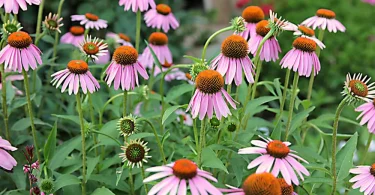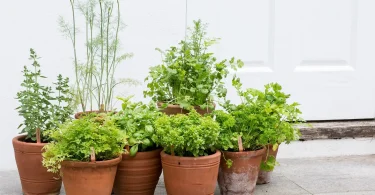The prickly pear cactus (Opuntia spp.), known for its flat, paddle-like pads and vibrant fruit, is a striking and resilient plant native to the Americas. This drought-tolerant cactus is prized for its edible pads (nopales) and fruit (tunas), as well as its ornamental appeal in desert gardens or as a houseplant. Propagating prickly pear cactus is a simple and rewarding way to expand your collection, create natural barriers, or share with others. This guide will walk you through the steps to how to propagate prickly pear cactus, ensuring healthy, vibrant growth.
Why and How to Propagate Prickly Pear Cactus?
Prickly pear cacti are valued for their rugged beauty, low-maintenance care, and versatility. Hardy in USDA zones 4–11 (depending on the species), they thrive in arid conditions but can be grown indoors in cooler climates. Propagation allows you to grow new plants for free, rejuvenate older specimens, or cultivate edible crops. Their ability to withstand drought and poor soils makes them ideal for xeriscaping, rock gardens, or containers.
Methods of Prickly Pear Cactus Propagation
Prickly pear cacti are most commonly propagated through pad (cladode) cuttings, though seeds can also be used. Below are detailed steps for each method.
1. Propagating via Pad Cuttings
- Choosing a Pad: Select a healthy, mature pad (6–12 inches long) from a vigorous plant. Look for pads that are firm, green, and free of blemishes, pests, or disease.
- Preparing the Pad:
- Wear thick gloves to protect against spines and glochids (tiny, hair-like prickles).
- Use a clean, sharp knife or pruning shears to cut the pad at the joint where it connects to the parent plant.
- Allow the cut pad to dry in a shaded, well-ventilated area for 3–7 days until the cut end forms a callus. This prevents rot when planted.
- Planting:
- Fill a pot or garden bed with a well-draining cactus or succulent mix (or mix equal parts potting soil, coarse sand, and perlite).
- Insert the callused end of the pad 1–2 inches into the soil, ensuring it stands upright. For larger pads, bury up to one-third of the pad.
- Water lightly to settle the soil and place in bright, indirect sunlight for the first 1–2 weeks, then transition to full sun.
- Rooting: Keep soil barely moist, watering every 7–10 days. Roots typically form in 2–4 weeks. Once rooted, treat as a mature plant.
2. Propagating via Seeds
- Sourcing Seeds: Collect seeds from ripe prickly pear fruit (tunas) or purchase from a reputable supplier. Ripe fruit is soft and colorful (red, purple, or yellow).
- Preparing Seeds:
- Extract seeds by cutting open the fruit, scooping out the pulp, and rinsing seeds in water to remove pulp.
- Soak seeds in lukewarm water for 12–24 hours to soften the seed coat and improve germination.
- Planting:
- Fill a shallow tray with a sterile, well-draining cactus mix.
- Scatter seeds evenly on the surface and cover lightly with a thin layer of fine sand or gravel (1/16 inch).
- Mist the surface to keep it slightly moist, avoiding saturation.
- Germination: Place in a warm (70–80°F), bright location with indirect light. Cover with a clear plastic lid to maintain humidity. Germination takes 2–6 weeks.
- Care: Remove the cover gradually once seedlings appear. Mist lightly every few days and transplant to individual pots when seedlings are 1–2 inches tall (6–8 weeks).
Step-by-Step Care for Propagated Prickly Pear Cactus
1. Select the Ideal Location
- Light: Provide bright, indirect light during propagation. Once established, prickly pear cacti thrive in full sun (6–8 hours daily). Indoors, use a south-facing window or grow lights.
- Temperature: Maintain 65–85°F during the growing season. Most species tolerate light frost (down to 20°F for some), but protect from prolonged freezing in cooler climates.
- Humidity: Low humidity is ideal, as prickly pears are adapted to arid conditions.
2. Prepare the Potting Media
- Soil Type: Use a well-draining cactus or succulent mix. Alternatively, mix equal parts potting soil, coarse sand, and perlite or pumice.
- Drainage: Ensure pots have drainage holes to prevent water accumulation. Terracotta pots are ideal for their breathability.
- Sterilization (Optional): Bake homemade mix at 180°F for 30 minutes to kill pathogens, especially for indoor propagation.
3. Watering
- During Propagation: Keep soil slightly moist for pad cuttings, watering sparingly every 7–10 days. For seeds, mist lightly every 2–3 days to maintain surface moisture.
- Established Plants: Water when the top inch of soil is dry, typically every 1–2 weeks in spring/summer and every 3–4 weeks in fall/winter. Allow soil to dry completely between waterings.
- Avoid Overwatering: Overwatering is the primary cause of cactus failure. Ensure excess water drains freely.
4. Fertilizing
- Frequency: Feed established plants with a diluted, low-nitrogen cactus fertilizer (e.g., 5-10-10) every 4–6 weeks during spring and summer.
- Avoid Over-Fertilizing: Use fertilizer at half strength to prevent soft, weak growth or burn.
5. Maintenance
- Cleaning: Gently brush off dust or debris from pads with a soft brush to maintain photosynthesis and appearance.
- Repotting: Repot every 2–3 years or when the plant outgrows its pot, using fresh cactus mix. Handle with gloves to avoid spines.
- Pest Management: Monitor for pests like scale, mealybugs, or spider mites. Treat with insecticidal soap or neem oil and isolate affected plants.
- Pruning: Trim dead or damaged pads with a clean, sharp knife to maintain shape and health.
Common Challenges and Solutions
- Root Rot: Caused by overwatering or poor drainage. Use a gritty, well-draining mix and water sparingly. Remove affected roots and repot if necessary.
- Pests: Scale, mealybugs, or spider mites may appear. Treat with insecticidal soap or neem oil and ensure good air circulation.
- No Growth: Insufficient light or nutrients can slow propagation. Provide full sun and fertilize lightly during the growing season.
- Yellowing or Soft Pads: Overwatering or fungal issues. Reduce watering, improve drainage, and ensure proper light exposure.
Tips for Success
- Propagation Timing: Propagate in spring or early summer for optimal rooting, as warmer temperatures promote growth.
- Variety Selection: Popular species for propagation include Opuntia ficus-indica (edible fruit and pads) and Opuntia engelmannii (ornamental, hardy).
- Container Gardening: Use prickly pear in mixed succulent arrangements or as standalone specimens in wide, shallow pots.
- Zone Considerations: In zones 4–8, grow indoors or in containers to protect from frost. In zones 9–11, they thrive outdoors year-round.
- Edible Harvest: Once established, harvest young pads (nopales) or fruit (tunas) for culinary use, handling carefully to avoid spines.
Fun Facts About Prickly Pear Cactus
- Edible Delights: Both pads and fruit are edible, used in dishes like salads, tacos, or jellies in many cultures.
- Cultural Significance: Prickly pear is a symbol of resilience in Mexico and appears on the country’s flag.
- Drought Tolerance: Its ability to store water in pads allows it to survive extreme drought, making it ideal for xeriscaping.
Troubleshooting Table
| Issue | Cause | Solution |
|---|---|---|
| No root growth | Improper callusing or overwatering | Ensure pads callus for 3–7 days; water sparingly until rooted. |
| Root rot | Overwatering or poor drainage | Use well-draining mix, water only when soil is dry, remove affected roots. |
| Pests | Scale, mealybugs, or spider mites | Treat with insecticidal soap or neem oil; improve air circulation. |
| Yellowing or soft pads | Overwatering or insufficient light | Reduce watering, ensure full sun, improve drainage. |
Conclusion
Propagating prickly pear cactus is an easy and rewarding way to grow this resilient, vibrant plant. Whether using pad cuttings or seeds, you can create new cacti with minimal effort. By providing full sun, well-draining soil, and careful watering, your prickly pear will thrive, adding desert charm to your garden or home. Start propagating today, and enjoy the rugged beauty and versatility of this iconic cactus!



